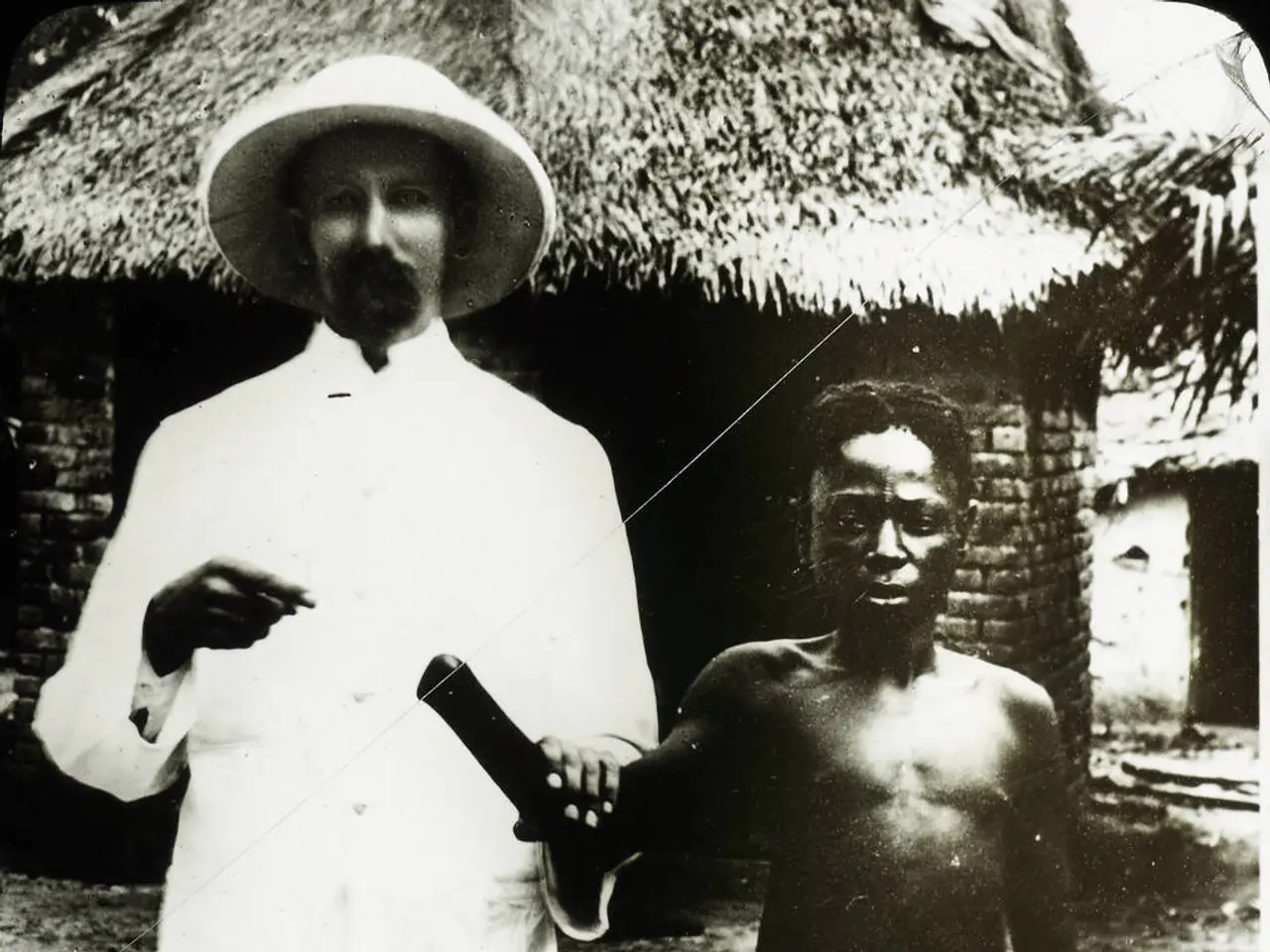Injured Biceps: Identifying Causes, Recognizing Symptoms, and Exploring Treatment Choices
Distal bicep tendon tears, a common injury in men aged 35-54, are often caused by sudden injury or heavy lifting, resulting in sharp pain, weakness, and difficulty bending or rotating the forearm.
Causes
The distal biceps tendon can tear due to a forceful elbow flexion or when the elbow is forced against resistance during lifting. Age-related degeneration, tendonitis, or overuse can also weaken the tendon, making it more susceptible to tears. Risk factors for distal bicep tendon tears include age over 40, smoking, corticosteroid use, prior tendonitis, rotator cuff tears, and rheumatoid arthritis.
Symptoms
Symptoms of a distal bicep tendon tear include sudden, severe pain at the front of the elbow, often accompanied by an audible pop during injury. Swelling, bruising, and tenderness near the elbow, weakness or difficulty bending the elbow and twisting the forearm, and visible deformity such as a bulge in the upper arm from the muscle retracting and a gap at the elbow where the tendon is absent are common symptoms.
Treatment Options
Treatment for distal bicep tendon tears often requires surgical repair to restore strength and function, especially in young or active male patients, or those with significant motor strength loss. Surgery involves reattaching the torn distal biceps tendon to the radius bone. Non-surgical management is reserved for less active individuals with minimal pain or dysfunction but may result in loss of strength. Post-operative rehabilitation is critical for regaining range of motion and strength.
Additional Notes
Biceps tendonitis can precede or contribute to tendon weakening but is usually treated non-surgically. Surgery in tendonitis is less common and usually addresses damage at the shoulder level. This overview specifically reflects distal biceps tendon tears, which occur at the elbow, distinct from proximal biceps tendon injuries near the shoulder.
With successful treatment, the overall prognosis of a distal bicep tear is generally good, but recovery may take time, ranging from 4-6 months for a partial tear to 6-9 months for a complete tear. Preventing distal bicep tears involves being aware of repetitive motions, warming up before using the arms, and performing exercises with appropriate form to avoid excessive stress on the tendons. It may also be advisable to talk to a doctor or physical therapist about any concerns with movements and to consider choosing activities that may cause less wear and tear on the tendon.
[1] Mayo Clinic. (2021). Distal biceps tendon rupture. [online] Available at: https://www.mayoclinic.org/diseases-conditions/distal-biceps-tendon-rupture/diagnosis-treatment/drc-20372450
[2] American Academy of Orthopaedic Surgeons. (2021). Distal Biceps Tendon Rupture. [online] Available at: https://orthoinfo.aaos.org/en/diseases--conditions/distal-biceps-tendon-rupture
[3] Johns Hopkins Medicine. (2021). Biceps Tendonitis. [online] Available at: https://www.hopkinsmedicine.org/health/conditions-and-diseases/biceps-tendonitis
[4] OrthoInfo. (2021). Distal Biceps Tendon Rupture. [online] Available at: https://www.orthoinfo.org/en/diseases--conditions/distal-biceps-tendon-rupture
[5] UPMC. (2021). Distal Biceps Tendon Rupture. [online] Available at: https://www.upmc.com/services/orthopaedic-care/conditions-treatments/a-z/distal-biceps-tendon-rupture
- Predictive factors for distal bicep tendon tears in older populations might include chronic kidney disease, mental health conditions such as depression and bipolar disorder, and chronic diseases like uveitis (U Ve ИТ Ис), psoriasis, and multiple sclerosis (MS).
- Obesity, a common health concern, may increase the risk of accidental injuries and falls that could lead to distal bicep tendon tears.
- In individuals with rheumatoid arthritis (RA), the likelihood of distal bicep tendon tears might be higher due to the inflammation and joint damage caused by the disease.
- A prostate-specific antigen (PSA) test is not typically associated with distal bicep tendon tears but is a common medical condition used for prostate cancer screening in men.
- Musculoskeletal surgeries, such as shoulder pain surgeries, could help manage any potential complications arising from distal bicep tendon tears.
- In addition to treating physical ailments, science in medicine plays an essential role in researching the causes and best treatment options for chronic diseases like distal bicep tendon tears.
- Maintaining a balanced diet, optimizing nutrition, and regular fitness and exercise, such as participating in sports like football (American football, NFL, or NCAA football), can help improve overall health and prevent injuries related to distal bicep tendon tears.
- Preventing distal bicep tears is essential for anyone participating in sports, and following health and wellness guidelines, such as proper warm-up exercises and protecting joints from excessive stress, can help reduce the risk.
- Science and medical research are continually working on discovering the causes and improving the treatments for various chronic diseases and medical conditions, including distal bicep tendon tears.
- Preserving muscle strength and restoring function are crucial aspects of recovery from distal bicep tendon tears, especially for those involved in sports and other physical activities.
- Early detection and accurate diagnosis of distal bicep tendon tears can ensure prompt and effective treatment, reducing the chance of further complications and improvements in overall recovery time.
- Distal bicep tendon tears can affect all age groups, but those with risk factors, such as smoking, prior tendonitis, and rotator cuff tears, should take extra caution while engaging in activities that could potentially cause injury.
- Identifying the signs and symptoms of distal bicep tendon tears, such as sudden pain, weakness, or visible deformity in the upper arm, can help individuals seek proper medical attention and treatment.
- Overall, a holistic approach that combines nutrition, fitness, and mental health as well as early detection, accurate diagnosis, and effective treatment ensures a better quality of life for those suffering from distal bicep tendon tears and other chronic diseases.




